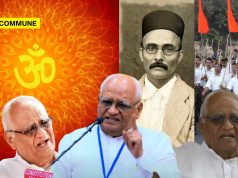
India, a land where ancient traditions meet modern innovation, embodies a vibrant tapestry of cultures, languages, and faiths. However, this very diversity creates a fertile ground for a modern-day weapon of mass destruction – fake news. In the digital age, fabricated stories and manipulated visuals can travel at lightning speed across the internet, wreaking havoc on this delicate social fabric. Unlike traditional media with its editorial oversight, the internet empowers anyone to become a publisher. While this democratizes information, it also allows the unfettered spread of misinformation, with potentially devastating consequences.
The Destructive Power Of Fake News
The threat of fake news isn’t a distant worry; it’s a present danger. Doctored videos and fabricated stories have ignited mob lynchings, fuelled communal tensions, and eroded public trust in institutions. From claims about religious minorities spreading diseases to misinformation about government policies, fake news thrives by exploiting pre-existing social fault lines. It can:
- Incite Violence: Malicious rumours, often laced with religious or social undertones, can quickly morph into mass hysteria, leading to riots, mob violence, and loss of life.
- Erode Public Trust: Fake news undermines public confidence in democratic institutions and sows discord within communities.
- Hinder Progress: Misinformation can derail important public health initiatives, disrupt economic policies, and hamper disaster relief efforts.
- Stifle Free Speech: When genuine information gets buried under an avalanche of fake news, it undermines the very foundation of a healthy democracy – informed discourse.
The Limitations Of Existing Solutions
The current legal framework in India lacks the teeth to effectively combat fake news. Traditional defamation laws are cumbersome and time-consuming, often proving inadequate for the fast-paced nature of online misinformation. While some platforms have adopted voluntary content moderation policies, their effectiveness is limited.
Adopting a Singapore-style POFMA (Protection from Online Falsehoods and Manipulation Act) might seem like a solution, but India’s unique social landscape demands a more nuanced approach. A centralized system struggling to keep pace with the sheer volume and diversity of content in 22 official languages and hundreds of dialects is a recipe for ineffectiveness.
A Multi-Pronged Approach For India
Combating fake news in India requires a multi-pronged approach that addresses the specific challenges faced by the nation:
- Strengthening the Legal Framework:
- A dedicated Fake News Authority established by Parliament, with regional branches for linguistic and cultural sensitivity.
- A clear definition of “fake news” that differentiates malicious misinformation from unintentional errors or satire.
- Graduated Penalties:
- For individuals: fines, community service, and imprisonment for repeat offenders.
- For publishers and platforms: hefty fines for knowingly publishing fake news, and potential suspension/revocation of licenses for repeated violations.
- Right to Appeal: Content creators and publishers should have a clear right to appeal against flagging, with robust appeals process to prevent censorship.
- Independent Oversight & Transparency: The Fake News Authority should function independently of the government, with transparent decision-making processes.
- Empowering Fact-Checking Organisations:
- Increased government funding for independent fact-checking organizations.
- Collaborations between fact-checkers, journalists, and social media platforms to debunk false information quickly and effectively.
- Standardizing fact-checking methodologies and ensuring easy public access to verified information
- Promoting Media Literacy:
- Integration of media literacy programs into school curriculums, teaching students how to critically evaluate information online.
- Public awareness campaigns that educate citizens on how to identify and avoid fake news.
- Encouraging responsible digital citizenship, where users flag suspicious content and verify information before sharing.
- Social Media Platforms Take Responsibility:
- Implement stricter content moderation policies that target fake news dissemination.
- Partner with fact-checking organizations for content verification.
- Develop algorithms that identify and demote fake news content, promoting verified information in user feeds.
- Increase transparency in content moderation practices.
The Road To A More Informed Future
The fight against fake news is a continuous battle. By creating a robust legal framework, empowering fact-checkers, promoting media literacy, and holding social media platforms accountable, India can take a crucial step toward a more informed and peaceful future. This fight is not just about safeguarding national security, but also about protecting the very essence of a vibrant democracy – the free flow of truthful information that empowers citizens to make informed choices.
India’s rich tapestry deserves to be protected from the corrosive effects of fake news. By adopting a multi-pronged approach that combines strong legal deterrents, empowered fact-checkers, and media clutter.
Ganesh Kumar is a geo-political analyst.
Subscribe to our channels on Telegram, WhatsApp, and Instagram and get the best stories of the day delivered to you personally.




